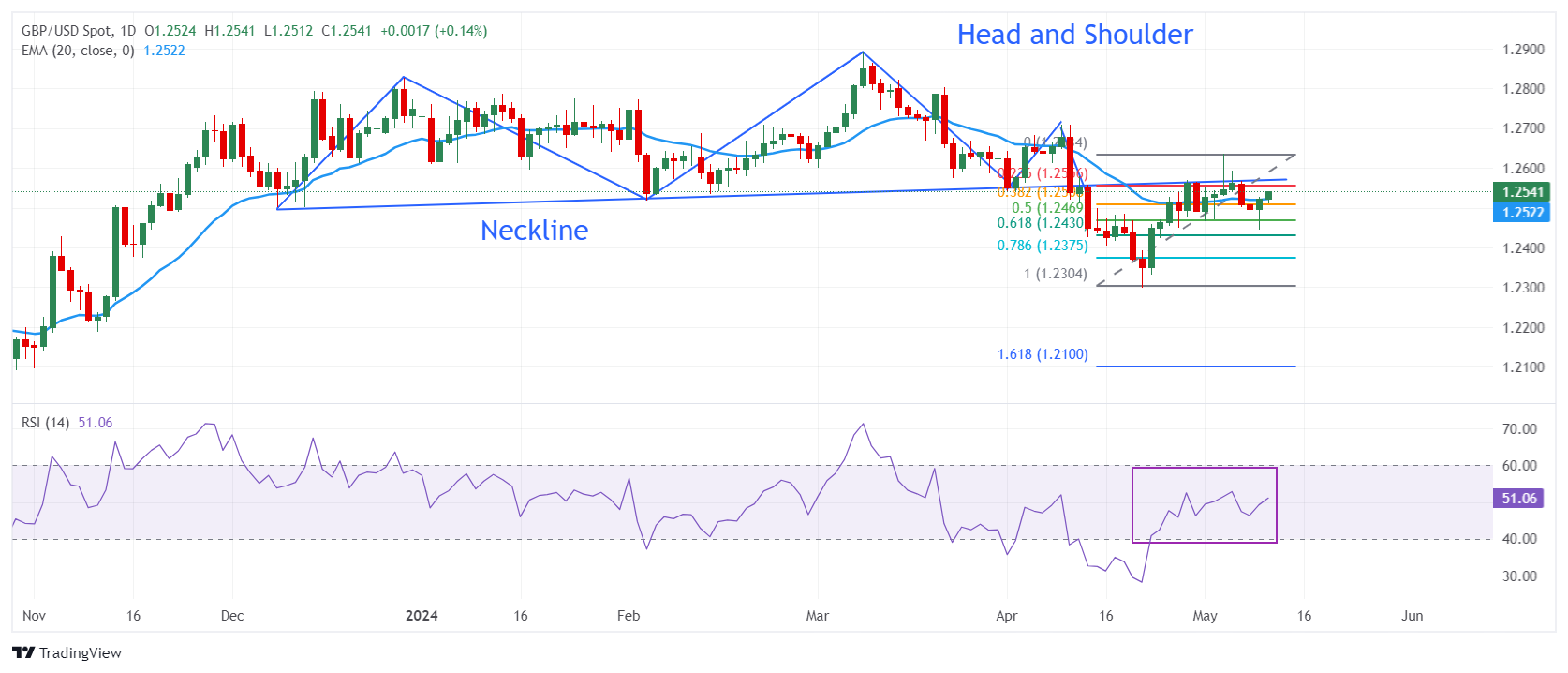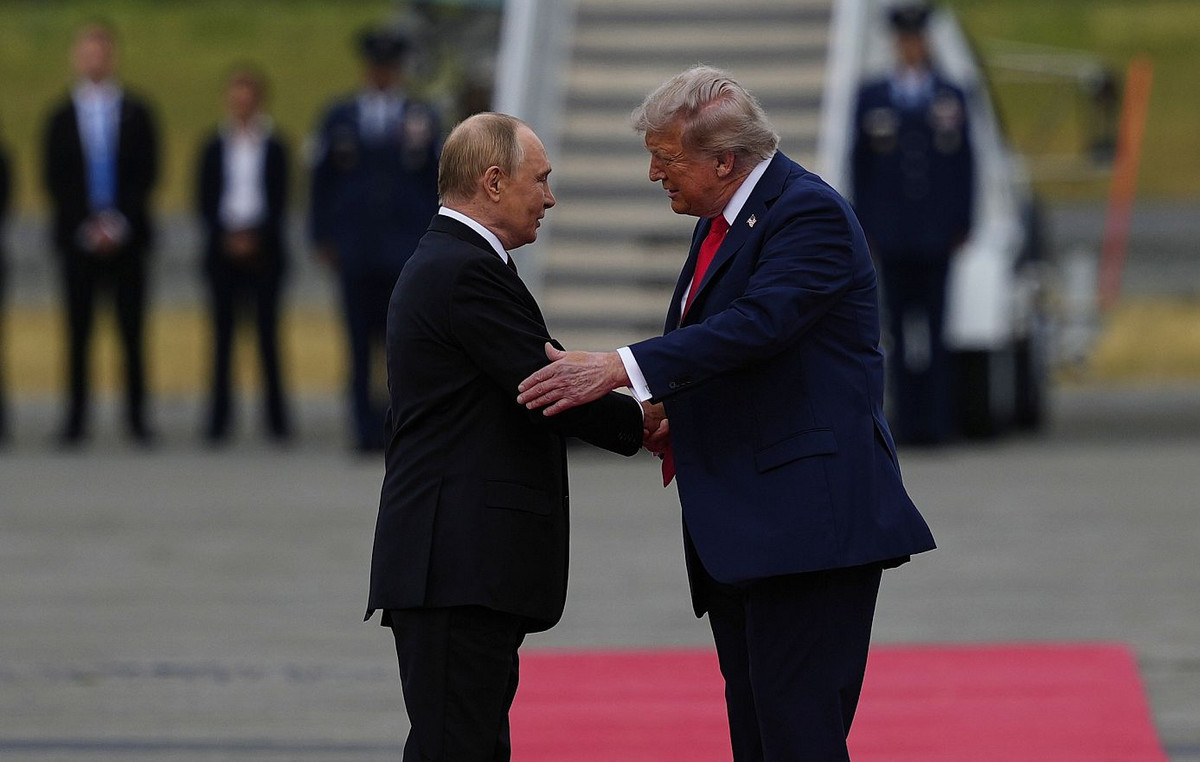- Sterling rises to 1.2540 following encouraging UK Q1 GDP and factory data for March.
- UK GDP growth in the first quarter suggests the 2023 technical recession was shallow.
- The easing of the US labor market weighs on the US dollar.
The British Pound (GBP) extends its rise to 1.2540 in the early Friday session in New York, as the UK's Office for National Statistics (ONS) released strong preliminary first quarter Gross Domestic Product (GDP) figures. The agency showed that the economy expanded at a strong pace of 0.6% compared to expectations of 0.4% after contracting 0.3% in the last quarter of 2023.
Strong British GDP growth has suggested that the technical recession seen in the second half of 2023 was shallow. On an annual basis, Britain's first-quarter GDP grew by 0.2%, the same pace at which it contracted previously. Investors anticipated stagnating year-over-year growth. Meanwhile, monthly GDP growth in March was 0.4%, stronger than the consensus of 0.1% and the previous reading of 0.2%, revised up from 0.1%.
Rising GDP growth would allow the Bank of England (BoE) to achieve a “soft landing”. BoE Governor Andrew Bailey commented at the press conference following the monetary policy statement that the central bank is confident that inflation will return to its target in the coming months. A soft landing is a scenario in which the central bank achieves price stability without triggering a recession.
Earlier in the American session, BoE chief economist Huw Pill said he sees inflation on the decline, but has suggested the central bank should focus on the persistent components of inflation and not the headline rate. Pill did not provide any timetable for rate cuts but said the Monetary Policy Committee (MPC) has sent a relatively clear signal that the bank rate can be cut when there is sufficient evidence of a downward path in persistent components of inflation. .
Daily Market Summary: Sterling rises on strong UK GDP, US dollar volatility
- The British Pound rises strongly to 1.2540 against the US Dollar (USD) on optimism of preliminary GDP growth in the first quarter and good factory data. Aside from the encouraging first quarter GDP data, Britain's ONS showed monthly industrial production rose 0.2% in March, versus expectations for a 0.5% decline. Annually, industrial production grew at a higher rate of 0.5% compared to estimates of 0.3%.
- Monthly Manufacturing Production grew by a surprising 0.3%, while economists were forecasting a contraction of 0.4%. Annually, this indicator increased at a stronger pace of 2.3% versus expectations of 1.8%.
- The situation of strong US factory data and easing inflationary pressures is favorable for the Bank of England to lower interest rates from their current levels of 5.25%. On Thursday, the BoE held interest rates steady for the sixth consecutive meeting. However, the central bank's overall message suggested that the BoE is gradually moving towards normalizing its policy.
- Of the nine members of the Monetary Policy Committee, Swati Dhingra and Dave Ramsden, deputy governor of the BoE, voted in favor of a cut of 25 basis points (bp), to 5%. Financial markets were divided over Ramsden's vote, as he supported a neutral stance on interest rates at the March policy meeting. But his April comment suggests he is confident inflation will return to the 2% target sooner.
- Additionally, Andrew Bailey's comment on interest rates was more dovish than expected. Bailey did not rule out the possibility of the BoE cutting interest rates from June. He said: “A bank rate cut in June is not ruled out or planned.” For the full year, Bailey said: “We may need to cut rates more than what is currently priced into market rates.”
- Meanwhile, the US Dollar Index (DXY) has rebounded slightly after a sharp decline to approach the crucial support of 105.00. The US dollar remains under pressure as higher-than-expected jobless claims for the week ending May 3 accentuated concerns about the strength of the US labor market. The US Department of Labor showed that initial jobless claims were the highest since the week of November 10, showing 231,000 versus the consensus of 210,000 and the previous reading of 209,000.
- Looking ahead, investors will focus on UK labor market data for the three months ending in March and US Consumer Price Index (CPI) data for April, due out next week. coming.
Technical Analysis: British Pound Holds on to Gains Above 1.2500

The British Pound advances to 1.2540 on multiple tailwinds. The GBP/USD pair rebounded strongly from the 50% Fibonacci retracement (traced from the April 22 low at 1.2299 to the May 3 high at 1.2634) near 1.2470. The pair is back above the 20-day EMA, which is trading around 1.2520.
The asset is still below the neck line of the head and shoulders (H&S) chart pattern on the daily time frame. On April 12, Libra fell sharply after breaking below the neck of the head-and-shoulder pattern drawn from the December 8 low around 1.2500.
The 14-period RSI is oscillating in the 40.00-60.00 range, suggesting indecision among market participants.
Pound Sterling FAQ
What is the Pound Sterling?
The British Pound (GBP) is the oldest currency in the world (886 AD) and the official currency of the United Kingdom. It is the fourth most traded currency unit in the world, with 12% of all transactions and an average of $630 billion per day, according to 2022 data.
Its key currency pairs are GBP/USD, also known as “Cable”, which represents 11% of the forex market, GBP/JPY, or the “Dragon” as it is known to traders (3%), and EUR/GBP (2%). The pound sterling is issued by the Bank of England (BoE).
How do Bank of England decisions influence the Pound Sterling?
The most important factor influencing the value of the Pound Sterling is the monetary policy decided by the Bank of England. The Bank of England bases its decisions on achieving its main objective of “price stability”, that is, a stable inflation rate of around 2%. Its main tool to achieve this is the adjustment of interest rates.
When inflation is too high, the Bank of England tries to contain it by raising interest rates, which makes access to credit more expensive for individuals and companies. This tends to be positive for the GBP, as higher interest rates make the UK a more attractive place for global investors to park their money.
When inflation is too low, it is a sign that economic growth is slowing. In this scenario, the BoE will consider lowering interest rates to make credit cheaper, so that companies borrow more to invest in projects that generate growth.
How does economic data influence the value of the Pound?
The published data gauges the health of the economy and may influence the value of the Pound sterling. Indicators such as GDP, manufacturing and services PMIs, and employment can influence the direction of the Pound.
A strong economy is good for the British pound. Not only does it attract more foreign investment, but it may encourage the Bank of England to raise interest rates, which will directly strengthen the Pound. Otherwise, if economic data is weak, the pound is likely to fall.
How does the trade balance affect the Pound?
Another significant data for the pound sterling is the trade balance. This indicator measures the difference between what a country earns from its exports and what it spends on imports during a given period.
If a country produces highly sought-after exports, its currency will benefit exclusively from the additional demand created by foreign buyers wishing to purchase these goods. Therefore, a positive net trade balance strengthens a currency and vice versa for a negative balance.
Source: Fx Street
I am Joshua Winder, a senior-level journalist and editor at World Stock Market. I specialize in covering news related to the stock market and economic trends. With more than 8 years of experience in this field, I have become an expert in financial reporting.







